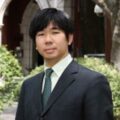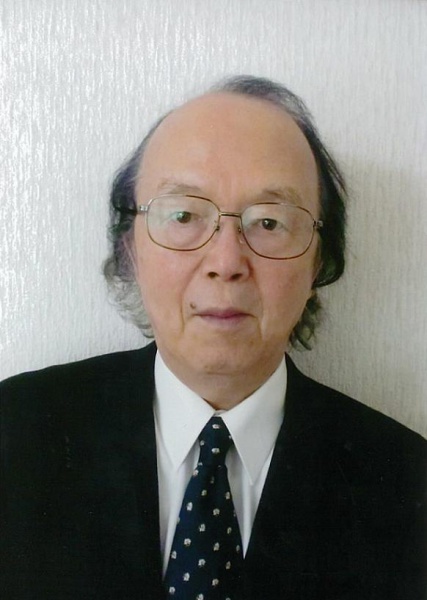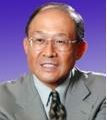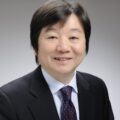(ASIA PIVOT) Japan Should Build Comprehensive East Asia Strategy

Tanaka Hitoshi
Main points:
— Rebuild U.S.-Japan relations on the basis of the changes in its surrounding environment
— Establish a trilateral framework between Japan, the United States and China to enhance military confidence-building
— Participate in the making of economic rules under the Trans-Pacific Partnership
Over the past 10 years, the U.S.-Japan relationship has changed significantly. As in “Operation Tomodachi” carried out by the United States following the March 11, 2011 earthquake disaster, there have indeed been examples that reflect the strength of bilateral relations. But along with the relative decline in Japan’s national strength, its international significance has also diminished. From the point of view of the United States, with Japan changing prime ministers every year it was impossible to establish a relationship of trust as an ally.
In particular, the Democratic Party of Japan (DPJ) administration launched by Yukio Hatoyama in 2009 laid out the policies of seeking to “relocate the U.S. Futenma base at least outside of Okinawa Prefecture” and to establish “an equal Japan-U.S. relationship and an East Asian Community” without ample consultations in advance with the United States, its major ally. I believe it is true that this has also generated suspicion over whether Japan was trying to detach itself from the United States. Meanwhile, U.S. President Barack Obama has also changed course from the George W. Bush administration’s stance of giving priority to allies in adopting a more pragmatic approach.
Japanese Prime Minister Shinzo Abe has announced plans to solidify the U.S.-Japan relationship. However, one must not think of rebuilding bilateral relations in a conventional way. Without attempting to reconstruct relations on the assumption that the circumstances surrounding Japan and the United States have changed drastically, it may be impossible to strengthen ties.
First, one must contemplate what kinds of change have taken place in the background of the bilateral relationship. During the Cold War era or the age when the United States was the sole superpower, the alliance between the United States and Japan, the world’s second-largest economy at the time, benefited not only the two countries but also the entire world. Nowadays, however, when the world is said to be multi-polar or even non-polar with the rise of emerging nations, it has become more difficult for the coalition of Western democracies led by the United States to exercise its decisive influence on the world. This is especially noticeable in East Asia.
Since the end of World War II, the massive scale of the national powers of Japan and the United States, as well as their alliance, contributed greatly to the stability of the East Asian region. But this structure has changed over the past decade. China’s gross domestic product (GDP), which 10 years ago was less than half of Japan’s, has now surpassed Japan’s and is predicted by some to overtake the United States’ in 15 years.
Japan’s presence in the United States versus that of China’s has also reversed. Currently, China’s status, as reflected in major economic statistics such as its ratio in total U.S. trade and its holdings of U.S. Treasury bonds, is almost on a par with that of Japan’s around 1990 at the peak of its economic clout. Moreover, while the population with Chinese roots is expanding by leaps and bounds in the United States, people of Japanese descent are the only ones among Asians to be shrinking in numbers. The number of Japanese students studying in the United States, which used to be the largest back in 1997, has continued to decrease sharply to only about 20,000 as of 2011. In contrast, about 190,000 students from China are studying in the United States.
According to the U.S. research firm Gallup Inc., Japan has consistently been seen as the most important partner for the United States since the end of the Cold War, but now it is being replaced by China. Needless to say, the Japan-U.S. alliance is important in order to preserve democratic values; but one must not look away from the change in the balance of power that is taking place in reality. Even for Japan, China has been its largest trading partner since 2007.
With China growing in power and turning more aggressive, while also becoming more interdependent with others, what should be done to change it into a constructive presence? One must recognize that this is the greatest common challenge for the U.S.-Japan alliance.
Based on this understanding, instead of Japan and the United States seeing China through their respective bilateral relationships with Beijing, it is necessary to address China within a comprehensive strategy for East Asia. The Senkaku issue is an excellent example. Amid escalating tensions over the Senkaku Islands with Chinese vessels and aircraft violating Japan’s territorial waters and airspace, the United States’ clear statement that the Senkaku Islands are covered by the U.S.-Japan security treaty has boosted Japan’s deterrent power.
In talks with Japanese Foreign Minister Fumio Kishida, then U.S. Secretary of State Hillary Clinton took the U.S. position one step further by stating that “we oppose any unilateral actions that would seek to undermine Japanese administration.” At the same time, as it is crucial to prevent the issue from triggering a clash between Japan and China, the United States also urged Japan to exercise self-restraint. I believe this perhaps reflected the view that the United States is opposed to measures to step up effective control as pledged by the Liberal Democratic Party (LDP) in its election campaign. The United States wants to see the Japan-China relationship back on a constructive track.
In addition to repairing Sino-Japanese relations, amid growing tensions with North Korea, Washington also believes it is extremely important for progress to be made soon by its allies Japan and South Korea to mend their ties. It is, therefore, wary about moves in Japan to change interpretations on issues related to history. The United States believes that such attempts to review the “Murayama statement” and “Kono statement” will not only isolate Japan, but also be certain to invoke the wrath of U.S. residents of Chinese and Korean descent and thus develop into a problem for the United States itself.
The key to rebuilding the U.S.-Japan relationship would be for Japan itself to establish a comprehensive strategy for East Asia with the purpose of confronting China constructively in mind, and discuss actively with the United States. At the core of its East Asia strategy should be the Japan-U.S. security alliance. In order to hedge the risk of a China that is expanding into a major power but with an unpredictable future, the security alliance must be strengthened. From this viewpoint, the division of roles and missions between Japan and the United States should once again be reviewed.
With the United States likely to slash military spending significantly, it would be necessary for Japan to increase its defense burden. At the same time, base-hosting burdens on Okinawa must be alleviated by streamlining the security alliance, such as through co-use of bases and building bases for joint exercises. Even with the Futenma base issue, I believe a new approach will be plausible as a result of consultations between Japan and the United States to review their roles and missions. Furthermore, with regard to the issue of exercising the right to collective self-defense, Japan should take time to examine it carefully and not reach a hasty conclusion.
In addition, it is the right policy for Japan to strengthen its strategic relationships with such countries as South Korea, Australia, Indonesia, Vietnam and India, and this is in line with the U.S. “Asia pivot” strategy. More importantly, Japan must build confidence with China. To that end, a trilateral framework between Japan, the United States and China, such as in the form of a three-way meeting of their foreign and defense ministers, should be established. Mutual military confidence will likely improve through joint actions between the three, such as in promoting transparency of defense budgets and in dealing with natural disasters.
It will also be necessary to accelerate the process of defining economic rules in the region. East Asia must press forward with its economic integration, such as through free trade agreements (FTA) concluded by Japan, China and South Korea, as well as the Regional Comprehensive Economic Partnership (RCEP). But that alone is not enough. Japan’s participation in the rule-making process under the Trans-Pacific Partnership (TPP) will be indispensable in advancing economic cooperation in East Asia.
Establishing rules for an advanced system of free economy, not state capitalism, under the TPP in fact brings reassurances for Japan, in the sense that it will not be overwhelmed by China and its enormous market. It is wrong to think passively that Japan’s agricultural industry would be wiped out if it joined the TPP. Even if the removal of tariffs without exceptions is the goal set at the beginning of negotiations, it is not the end result. Also, with regard to the energy issue that is decisively important in preventing future conflicts in East Asia, it is desirable to make good use of the East Asia Summit to get the ball rolling for full-fledged energy cooperation in the region.
In comparison with the “East Asian Community initiative,” I call this comprehensive framework for East Asia “multi-layered functionalism.” That is to say, while the participating countries will differ depending on the functions they should cooperate on, overall it will lead to win-win relationships for the region, including China. On the Senkaku issue, the main factor behind the confrontation between Japan and China, it is hardly conceivable that one side would compromise and thus enable a resolution to the matter. Thus it is most important to recognize that the benefits of Japan-China cooperation in the future would be significant and to affirm that the Senkaku issue must not damage the overall Sino-Japanese relationship.
What is expected of Japanese foreign policy right now is the capability to entice the United States and China into this kind of comprehensive initiative.
===============================
Translation of an article (page 5) from the Nihon Keizai Shimbun Feb. 5, 2013, morning edition, with permission to post on this website from Nikkei Inc. Unauthorized copying and reprinting are prohibited.
Hitoshi Tanaka formerly served as deputy foreign minister. He was born in 1947 and holds a B.A. in law from Kyoto University.




